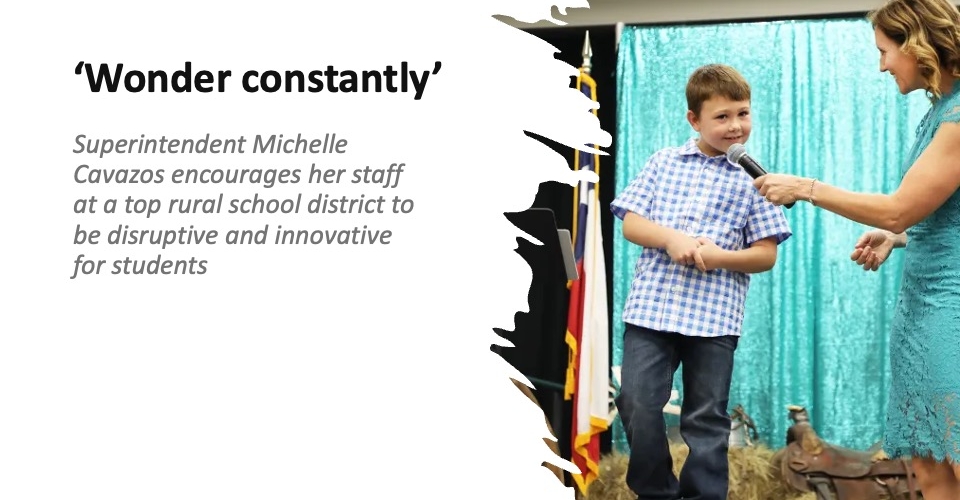District technology directors were at the helm and executed herculean initiatives as the COVID-19 pandemic required school systems to quickly transition to remote learning.

Abruptly changing demands caused terms such as “pivot” and “navigate” to become authentic, yet overused, pain points for educators. Schools heavily invested time and resources to function in the short-term as learning models vacillated between fully remote, hyflex and in-person.
The demands left minimal bandwidth for reflection, monitoring effectiveness or investing in continuous improvement.
As school communities enter the endemic, some pandemic practices have proven to better serve students and families and have been sustained. Minnesota district technology directors participated in focus groups and shared three “wins” for school communities.
1. Marked increases in teachers’ technology proficiency and improved digital pedagogy
Districts acknowledged teachers’ steep technology learning curve at the start of remote learning. Technology directors shared admiration for the gains and desire to sustain effective instructional technology practices, tools and platforms. An increase in Chromebook distribution to students, especially at the secondary level, and Google gaining popularity as a software platform were highlighted as direct results of the pandemic.
One director reflected, “We were a Google district prior to that, but this really forced us to jump in at the enterprise level.” Another explained a change in mindset, “We said we have to have Chat and Google Meets open, where students can create a Meet and can Chat each other because it’s part of the learning process.”
Teachers honed their technology expertise. They are now posting to learning platforms at a greater frequency and exploring how software such as GoGuardian can be used to enhance classroom management at a distance. A director explained that the use of software in the classroom is an evolving conversation, moving from technical skill to effective pedagogy: “Evolving is deeper, more rich conversations about how to effectively integrate technology—technology for intentional purpose rather than technology for technology’s sake.”
2. Addressing educational equity barriers through online learning models
Technology directors emphasized an unpredicted outcome that emerged was the preference for a remote learning modality even after the pandemic: “We came out of the pandemic and started a fully certified online school.” There was an acknowledgment that remaining in a remote learning modality is what is best for some students, including those with disabilities, multilingual learners and learners from a variety of cultural backgrounds.
More from DA: Which states boast the best public school systems? WalletHub reports
A director stated, “There was a real eye-opening, around special education in particular, that distance or online learning is actually a better situation for some kids with special needs, particularly kids who have social issues around anxiety or overstimulation, or kid-on-kid interactions.”
Some multilingual students experienced unpredicted success, “The EL population also had some surprises in terms of a mindset change of ‘EL students can’t possibly do well in online learning’, to some EL students actually thriving in an online environment because they’re surrounded by their family.” Technology directors learned that families can be better served by providing multilingual supports. One director shared, “We hired a family support technician who’s bilingual, and she is wonderful and is our first person to work with families.”
3. Reimagining schools vs. long-held traditional educational models
Technology directors expressed optimism about the opportunity to reimagine school as a consequence of the pandemic. One director pondered, “There’s the ability to facilitate, but there’s also re-imagining.” Another finished the thought, “We’re really trying not to do school the same way we did school before.” They reflected upon the role of innovation in instruction, what learning means, and what challenges persist.
Directors expressed that much change has occurred as a result of the pandemic and school systems are still grappling with the impact of this change. Lingering difficulties and new opportunities coexist. Leaders are questioning, “What skills actually need to be acquired through school, and what skills might be better accessed in other ways?” This is addressed by “rethinking instruction, what learning means, and how we engage.”
Educators have faced a barrage of challenges over the last three years. It is wise and healthy to reflect on what schools are doing well and acknowledge that new practices may better serve students and families.
Tracy Reimer ([email protected]) is the program director for the Leadership in K-12 Administration program at Bethel University in St. Paul, Minnesota. Jennifer Hill ([email protected]) is the graduate director of the Library Media program within the Teacher Development Department at St. Cloud State University in St. Cloud, Minnesota.









